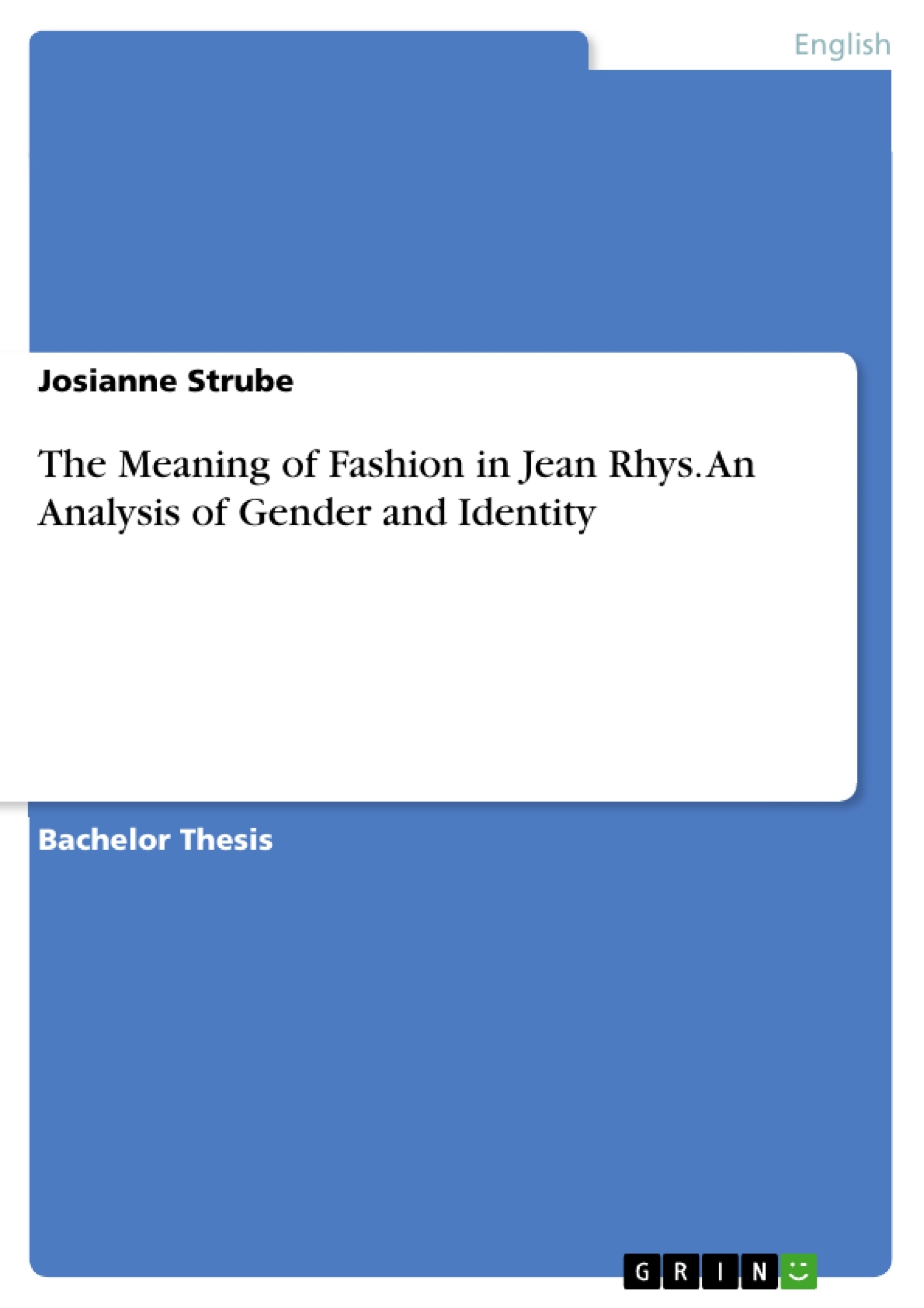This paper’s objective is to explore the ways in which Jean Rhys - in a quite revolutionary way - depicts fashion as a practice with various meanings. Fashion is entangled in a composite relationship with identity and the visual communication inherent in dress practices is much more complex than might first appear. In fact, Rhys raises questions about the political force of fashion enacted by women of different backgrounds. Albeit a fashion addict herself, she remains very critical of fashion’s positive possibilities, rather focusing on its counter-enforcement on female identity as well as making use of it as a means to examine social coherences.
Rhys has written five novels and various short stories. The novels I chose reflect different periods of her writing as well as different cultural, social and historical contexts. Additionally, the protagonists in each novel are of different ages, giving an insight into different situational concerns of women regarding fashion. Rhys’s characters are markedly similar, always outsiders, always close to the edge. Good Morning, Midnight and Voyage in the Dark depict Sasha Jansen and Anna Morgan’s movement in the modern urban space in which ‘good’ clothing is deemed a prerequisite. Wide Sargasso Sea sets a different focus, placing the subject of clothing in a colonial context. Rhys’s wrote her masterpiece Wide Sargasso Sea – published twenty-seven years after the publication of the last of her ‘continental’ novels - as a prequel to Charlotte Brontë’s Jane Eyre. Unhappy about Brontë’s description of Rochester’s mad Creole wife Bertha, Rhys conceptualized the novel as a rereading of the tragic life story of Antoinette “Bertha” Cosway.
The project includes several strands of theoretical thought to illuminate the multifaceted use of fashion in Rhys’s novels. In chapter two, each theoretical concept is outlined and summarized. In chapter three, I link the theories to Rhys’s texts. I start my analysis with two sociological theories, Georg Simmel’s Fashion (1904) and Joanne Finkelstein’s The Fashioned Self (1991). Simmel’s concepts are particularly helpful in relation to the historical context of Rhys’s writing. Finkelstein critically examines aspects which are elemental features for Rhys’s writing on fashion: consumerism, the commodification of the female body, the illusory act of transformation and the resulting ‘surface life.’
Table of Contents
1. Introduction
2. The Relationship between Fashion, Identity and Gender
2.1. Georg Simmel’s Sociological Theory of Fashion
2.2. Joanne Finkelstein’s The Fashioned Self
2.3. Central Concepts of Gender Theory
2.4. Notions of Creole Identity
3. Analysis of Fashion in Voyage in the Dark, Good Morning, Midnight and Wide Sargasso Sea
3.1. Fashion in the City in Good Morning, Midnight and Voyage in the Dark
3.2. A Surface Life: Consumerism, Commodification and Transformation in Good Morning, Midnight and Voyage in the Dark
3.3. Aspects of Fashionable Performance in Voyage in the Dark and Good Morning, Midnight
3.4. Fashioning the Creole: Race and Identity in Wide Sargasso Sea and Voyage in the Dark
4. Conclusion
- Quote paper
- Josianne Strube (Author), 2018, The Meaning of Fashion in Jean Rhys. An Analysis of Gender and Identity, Munich, GRIN Verlag, https://www.grin.com/document/515134
-

-

-

-
Upload your own papers! Earn money and win an iPhone X. -

-
Upload your own papers! Earn money and win an iPhone X. -

-
Upload your own papers! Earn money and win an iPhone X. -

-
Upload your own papers! Earn money and win an iPhone X. -

-
Upload your own papers! Earn money and win an iPhone X. -

-
Upload your own papers! Earn money and win an iPhone X. -

-
Upload your own papers! Earn money and win an iPhone X. -

-
Upload your own papers! Earn money and win an iPhone X. -

-
Upload your own papers! Earn money and win an iPhone X. -

-
Upload your own papers! Earn money and win an iPhone X. -

-
Upload your own papers! Earn money and win an iPhone X.

